Shiksha (Sanskrit: ?????? IAST: ?ik??) is a Sanskrit word, which means "instruction, lesson, learning, study of skill". It also refers to one of the six Vedangas, or limbs of Vedic studies, on phonetics and phonology in Sanskrit.
Shiksha is the field of Vedic study of sound, focussing on the letters of the Sanskrit alphabet, accent, quantity, stress, melody and rules of euphonic combination of words during a Vedic recitation. Each ancient Vedic school developed this field of Vedanga, and the oldest surviving phonetic textbooks are the Pratishakyas. The Paniniya-Siksa and Naradiya-Siksa are examples of extant ancient manuscripts of this field of Vedic studies.
Shiksha is the oldest and the first auxiliary discipline to the Vedas, maintained since the Vedic era. It aims at construction of sound and language for synthesis of ideas, in contrast to grammarians who developed rules for language deconstruction and understanding of ideas. This field helped preserve the Vedas and the Upanishads as the canons of Hinduism since the ancient times, and shared by various Hindu traditions.
Contents
Etymology
Shiksha literally means "instruction, lesson, study, knowledge, learning, study of skill, training in an art". It also refers to one of the six Vedangas, which studies sound, Sanskrit phonetics, laws of euphonic combination (sandhi), and the science of making language pleasant and understood without mistakes. Shiksha as a supplemental branch of the Vedas, included teaching proper articulation and pronunciation of Vedic texts. It was one of six fields of supplemental studies, others being grammar (Vyakarana), prosody (Chandas), ritual (Kalpa), etymology (Nirukta) and astrology (Jyotisha, calculating favorable time for rituals).
The roots of Shiksha can be traced to the Rigveda which dedicates two hymns 10.125 and 10.71 to revere sound as a goddess, and links the development of thought to the development of speech. The mid 1st-millennium BCE text Taittiriya Upanishad contains one of the earliest description of Shiksha as follows,
? ??????? ?????????????? ?
????? ????? ? ?????? ???? ?
??? ??????? ? ????????? ???????????? ? ? ?
Om! We will explain the Shiksha.
Sounds and accentuation, Quantity (of vowels) and the expression (of consonants),
Balancing (Saman) and connection (of sounds), So much about the study of Shiksha. || 1 ||—?Taittiriya Upanishad 1.2, Shikshavalli, Translated by Paul Deussen
Annette Wilke and Oliver Moebus date the Shiksha text of the Taittiriya Vedic school to be from 600 BCE at the latest. Texts such as this established, among other things, a rational order of the Sanskrit alphabet, state Wilke and Moebus. Other texts, such as Vyasa-Siksa of the Krishna Yajurveda, were composed later.
The ancient Vedic schools developed major treatises analyzing sound, vowels and consonants, rules of combination and pronunciation to assist clear understanding, to avoid mistakes and for resonance (pleasing to the listener). These texts include Samhita-pathas and Pada-pathas, and partially or fully surviving manuscripts include Paniniya Shiksha, Naradiya Shiksha, Bharadvaja Shiksha, Yajnavalkya Shiksha, Vasishthi Shiksha, Parashari Shiksha, Katyayani Shiksha and Manduki Shiksha.
History
Having intellectually determined the object to be communicated to others, the soul urges the mind in order to give expression, i.e., to vocalize the thought rising within. The mind so stimulated acts upon the physical fire which in its turn brings about a movement in the region of internal air. The internal air thus moved gets upward till it reaches the vocal apparatus.
—Paniniya-Siksa
Shiksha, states Hartmut Scharfe, was the first branch of linguistics to develop as an independent Vedic field of study among the Vedangas. This is likely because Vedas were transmitted from one generation to the next by oral tradition, and the preservation and the techniques of preservation depended on phonetics, states Scharfe.
The earliest Brahmanas – a layer of text within the Vedas, include some terms of art in the Vedic phonetics, such as Varna and Avasana. The Shiksha field was likely well developed by the time Aranyakas and Upanishads layer of the Vedas were being composed. The alphabet had been categorized by this time, into vowels (svara), stops (sparsa), semivowels (antastha) and spirants (usman). The field was fundamental to the ancient study of linguistics, and it developed as an interest and inquiry into sounds rather than letters. Shiksha, as described in these ancient texts, had six chapters - varna (sound), svara (accent), matra (quantity), bala (strength, articulation), saman(recital) and samtana (connection between preceding and following sounds).
The insights from this field, states Scharfe, "without doubt was applied by Vedic scholars to the art of writing". It also impacted the development of Indic scripts and evolution of language in countries that sought Indian texts or were influenced by Indian religions. According to Scharfe, and other scholars, the insights developed in this field, over time, likely also influenced phonetic scripts in parts of East Asia, as well as Arabic grammarian Halil in 8th-century CE.[15]
Discussion
A strictly symmetrical [Sanskrit] alphabet definitely has practical advantages in language teaching, but this is almost certainly not the reason for its highly complex structure. (...) A better explanation of the structural density is the striving for perfect and beautifully formed representation of the object of study. The rule of the grammarians show a similar striving for order.
—Annette Wilke and Oliver Moebus[16]
The Shiksha field of Vedic studies arranged the Sanskrit alphabet in a rational order, state Wilke and Moebus, each mapped to the anatomical nature of human sounds, from the back to the front - throat (at the very back), palate, palatal ridge, teeth and lips.[17] The letters of the Sanskrit alphabet were further organized by the Vedic scholars into a magic square, making symmetrical and resonant alternate readings of the letters possible, such as top to bottom in addition to left to right.[18] Further, the Shiksha scholars added Mudra (hand signs) to go with each sound, thereby providing a visual confirmation and an alternate means to check the reading integrity by the audience, in addition to the audible means.[16]
These Mudras continue to be part of the classical Indian dance tradition.[19] This interplay of the gesture and sound in Sanskrit recital, state Wilke and Moebus, is similar to the gesture of a conductor and the sound produced by music players in any classical orchestra.[20] In Sanskrit, the posture of the performer is an added dimension to those of pronunciation and gesture, together these empowered muscular memory with acoustic memory in the Hindu tradition of remembering and transmitting Sanskrit texts from one generation to the next, state Wilke and Moebus.[20]
The methodical phonetic procedure developed by Shiksha helped preserve the Vedas without the slightest variants in the most faithful way possible.[21] It made the Vedas and embedded Principal Upanishads the canonical scriptures of Hinduism. The rules and symmetric of Siksa helped the student to master enormous volumes of knowledge, and use the embedded codes and rules to self check his memory.[21]
However, state Wilke and Moebus, the Shiksha methodology has been not just highly technical, it has strong aesthetic "sensuous, emotive" dimension, which foster thinking and intellectual skills in a participatory fashion.[22] The reciter's mind and body are engaged, making language and sound as an emotional performance.[22] The study of phonetics functioned to transform a Vedic text, which traditionally was composed as language-music, into a musical performance.[23] Individual sounds in the Sanskrit have independent personalities, and the reciter helps develop their character and their timbre, state Wilke and Moebus. Naradiya Siksa, a phonetics treatise on the Sama Veda explains this aspects of phonology with various similes, such as,
Just as a tigress takes her cubs tightly in her teeth without hurting them, whilst fearing that she might drop them and injure them, so one should approach the individual syllables.
—?Naradiya Siksa 2.8.31, Translated by Annette Wilke and Oliver Moebus,[24]
Pratishakhyas
Pratisakhyas are the oldest Siksa textbooks of each branch of the Vedas.[25] Later Siksa texts are more specialized and systematic, and often titled with suffix "Siksa", such as the Naradiya-Siksa, Vyasa-Siksa, Pari-Siksa and Sarvasammata-Siksa.[26]
The Pratishakhyas, which evolved from the more ancient Vedic Texts padapathas (padap??ha) around 800 BCE, deal with the manner in which the Vedas are to be enunciated. There are separate Pratishakhyas for each Veda. They complement the books called Shiksha written by various authorities. Several Pratishakhyas have survived into the modern era, and these texts refine the structure of sound at different levels of nuance, some adding many more letters to the basic set in the Sanskrit alphabet:[27]
- Rigveda-Pratishakya: 47 letters[27]
- Shukla Yajurveda-Pratishakhya: 65 letters[27]
- Taittiriya (Krishna Yajurveda) Pratishakhya: 52 letters[27]
- Atharvaveda-Pratishakhya (Shaunakiya shakha)
- Samaveda-Pratishakhya (Rig-tantra): 57 letters (Pushpasutra is the second Pratishakhya of Samaveda)[28]
- Paniniya-Siksa: 63 or 64 letters[27]
The Shiksha Texts and the Pratishakhyas led to great clarity in understanding the surface structure of language. For clarity of pronunciation, they broke up the large Vedic compounds into word stems, prefixes, and suffixes. Certain styles of recitation (p??ha), such as the ja??p??ha, involved switching syllables, repeating the last word of a line at the beginning of the next, and other permutations. In the process, a considerable amount of morphology is discussed, particularly regarding the combination of sequential sounds, which leads to the modalities of sandhi. The Samaveda Pratishakhya, one of the earliest,[29] organizes the stop consonant sounds into a 5x5 varga or square:
| Gutturals | ka | kha | ga | gha | ?a |
|---|---|---|---|---|---|
| Palatals | ca | cha | ja | jha | ña |
| Retroflex | ?a | ?ha | ?a | ?ha | ?a |
| Dentals | ta | tha | da | dha | na |
| Labials | pa | pha | ba | bha | ma |
The alphabet is designed such that the difference between sounds is preserved whether you recite it horizontally or vertically. It was extended and completed with fricatives and sibilants, semi-vowels, and vowels, and was eventually codified into the Brahmi alphabet, which is one of the most systematic sound-to-writing mappings. Scholar Frits Staal has commented, "Like Mendelejev’s Periodic System of Elements, the varga system was the result of centuries of analysis. In the course of that develop
Watch movie Shiksha online on Amazon
Watch movie Shiksha online
Watch The Movie On PrimeDo Qaidi Full HD Movie Download
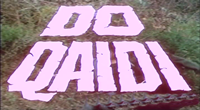
Diljale- The Burning Heart Full HD Movie Download

Daasi Full HD Movie Download
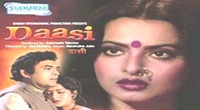
Meera Ka Girdhar Full HD Movie Download
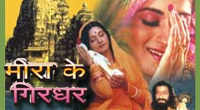
Deewana Mujh Sa Nahin Full HD Movie Download
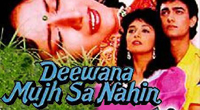
Dharam Yudh (1988) Full HD Movie Download
.jpg)
Aag Ka Gola Full HD Movie Download
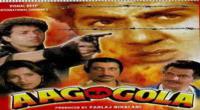
Nishan Full HD Movie Download
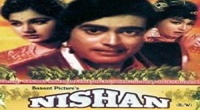
Bandhu (Hindi) Full HD Movie Download
.jpg)
Kanteerava Full HD Movie Download
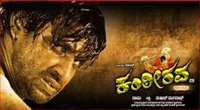
Sasural Full HD Movie Download
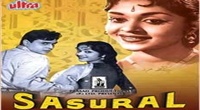
Annabond Full HD Movie Download
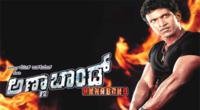
Seetharamakalyanam Full HD Movie Download
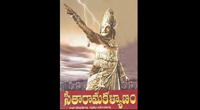
Entinti Ramayanam Full HD Movie Download
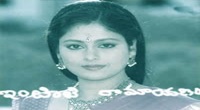
Chikkadu Dorakadu Full HD Movie Download
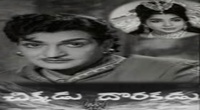
Harry Potter and the Order of the Phoenix Full HD Movie Download

Patli Kamar Lambe Bal Full HD Movie Download
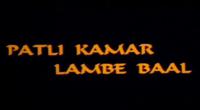
Muddhai Full HD Movie Download
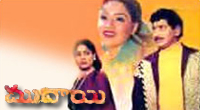
Gali Medalu Full HD Movie Download
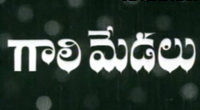
Around The World In 80 Days Full HD Movie Download

Noorie Full HD Movie Download
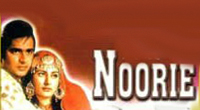
Download latest Movie from bollywood
- 1> baaghi 3
- 2> THE SKY IS PINK MOVIE FULL STORY AND REVIEW
- 3> Luka Chuppi
- 4> TO ALL THE BOYS I’VE LOVED BEFORE
- 5> Kabir Singh
- 6> Street Dancer 3D
- 7> Simmba
- 8> Gone Girl
- 9> The Girl Who Lived
- 10> Ludo
- 11> DILWALE DULHANIA LE JAYENGE
- 12> GUILTY
- 13> The Godfather
- 14> Adventures of Rusty
- 15> Sooryavanshi
- 16> Satyameva Jayate 2
- 17> Thappad
- 18> Bhool Bhulaiyaa 2
- 19> KGFChapter 2
- 20> Mardaani 2
- 21> Pinjar
- 22> Shivaji maharaj
- 23> Ek Villian 2
- 24> Hungama 2
- 25> Divergent
- 26> Mumbai Saga
- 27> The Internship
- 28> HIT (telugu)
- 29> Panga
- 30> The perfect date
- 31> 16 December
- 32> Gopala Gopala (Telugu)
- 33> Brahmastra
- 34> Gangubai Kathiawadi
- 35> Manmadhudu
- 36> Nenu local
- 37> Mahanati
- 38> Shatamanam bavathi
- 39> Lagaan
- 40> After
- 41> MOM
- 42> Shamshera
- 43> Raguvaran BTech
- 44> Khakee
- 45> The villain
- 46> OM
- 47> Mr. perfect
- 48> Bueatifull mind
- 49> Hichki
- 50> Gabbar Singh
- 51> Jogi
- 52> Before Sunrise
- 53> Before Sunset
- 54> Before Midnight
- 55> The Big Bull
- 56> Top Gun: Maverick
- 57> The Purge
- 58> The Sky is Pink
- 59> Laxmmi Bomb
- 60> Sadak 2
- 61> Sufna
- 62> Prithviraj
- 63> PK
- 64> Coolie No 1(2020)
- 65> Black Widow
- 66> Dear Zindagi
- 67> Dil Bechara
- 68> PHIR HERA PHERI
- 69> WAR
- 70> Dostana
- 71> RRR: Roudram Ranam Rudhiram
- 72> Maidan
- 73> Dabbang 3
- 74> Chhalaang
- 75> life as we know it
- 76> SherShaah
- 77> Sandeep Aur Pinky Faraar
- 78> Event Horizon
- 79> 83
- 80> Radhe: Your Most Wanted Bhai
- 81> Gunjan Saxena: The Kargil Girl
- 82> Mr India
- 83> Vivah
- 84> Anokha Bandhan
- 85> Ghost
- 86> Bhoot: Part One - The Haunted Ship
- 87> Haseen Dilruba
- 88> Laal Singh Chaddha
- 89> Qismat
- 90> Rajput
- 91> Drive
- 92> Dil Chahta Hai
- 93> Dil Ki Baazi
- 94> Dil Ka Rishta
- 95> Teesri Manzil
- 96> Dil
- 97> Love Aaj Kal
- 98> Khaali Peeli
- 99> Bunty Aur Babli 2
- 100> Atrangi Re
- 101> Gulabo Sitabo
- 102> Jodi
- 103> Suraj Pe Mangal Bhari
- 104> Deewana
- 105> Attack
- 106> Sardar Udham Singh
- 107> Toofan
- 108> THE LOVEBIRDS
- 109> Jersey
- 110> Ginny Weds Sunny
- 111> Thalaivi
- 112> Shiddat
- 113> Angels vs Zombies
- 114> Koi Mil Gya
- 115> Thank God
- 116> Bhuj: The Pride of India
- 117> Hum Aapke Hain Kaun
- 118> The Platform
- 119> Bird Box
- 120> Roohi Afzana
- 121> Torbaaz
- 122> Nikamma
- 123> World War Z
- 124> Extraction
- 125> Train to Busan
- 126> Life of Pi
- 127> SHAADI MEIN JROOR AANA
- 128> Himmat Aur Mehnat
- 129> To All The Boys: P.S. I Still Love You
- 130> Mimi
- 131> Good Newwz
- 132> Shubh Mangal Zyada Saavdhan
- 133> Raabta
- 134> Harry Potter and the Philosopher's Stone
- 135> Harry Potter and the Chamber of Secrets
- 136> Chhapaak
- 137> War of the Worlds
- 138> Harry Potter and the Prisoner of Azkaban
- 139> Harry Potter and the Goblet of Fire
- 140> MURDER MYSTERY
- 141> Shakuntala Devi
- 142> Bachchan Pandey
- 143> Jayeshbhai Jordar
- 144> Sheer Qorma
- 145> Saina
- 146> 'O' Pushpa I hate tears
- 147> Kedarnath
- 148> MS Dhoni The Untold Story
- 149> Chhichhore
- 150> Badhaai Ho
- 151> Unstoppable
- 152> Oz the Great And Powerful
- 153> The Girl on the Train
- 154> Haathi Mere Saathi 2020
- 155> The Conjuring: The Devil Made Me Do It
- 156> Gandhi Se Pehle Gandhi
- 157> The Song of Scorpions
- 158> Srimanthudu
- 159> Hello Guru Prema Kosame
- 160> Beauty and The Beast
- 161> Black Panther
- 162> Charlie and the Chocolate Factory
- 163> Bole Chudiyan
- 164> Fidaa
- 165> Duvvada Jagannadham
- 166> Bruce Lee: The Fighter
- 167> Hyper
- 168> Yaara
- 169> Red (2020)
- 170> Shivam
- 171> That Is Mahalakshmi
- 172> Nishabdham
- 173> Aashram 2020 web series
- 174> Laxmii
- 175> Mismatched
- 176> STUDENT OF THE YEAR 2
- 177> NAIL POLISH
- 178> Ramprasad Ki Tehrvi
- 179> KAAGAZ
- 180> 12 o Clock
- 181> The Power
- 182> bolo hau
- 183> Tribhanga
- 184> JAMUN
- 185> Madam Chief Minister
- 186> Maasaab
- 187> Aadhaar
- 188> Tanhaji
- 189> Bhaagi 3
- 190> Bhootnath
- 191> MALANG
- 192> Jai Mummy Di
- 193> Haathi Mere Saathi 2021
- 194> Shakeela
- 195> Unpaused
- 196> Annayya
- 197> Vamsoddharakudu
- 198> Mrugaraju
- 199> Narasimha Naidu
- 200> Sankranti
- 201> Manasu Maata Vinadhu
- 202> Anjaane
- 203> Apaharan
- 204> Bachke Rehna Re Baba
- 205> Bewafaa
- 206> Roohi
- 207> Radhe
- 208> Zindagi Khoobsoorat Hai
- 209> Yeh Mohabbat Hai
- 210> Yeh Kya Ho Raha Hai?
- 211> The Tomorrow War
- 212> DehradunDiary
- 213> Meri Shaadi Karaoo
- 214> Matruu Ki Bijlee Ka Mandola
- 215> No One Killed Jesica
- 216> Aag Ka Goola
- 217> Eight Million Dollars
- 218> Three Hundred
- 219> Cats and Dog
- 220> Decoy
- 221> Gold Rush
- 222> You Have Got Mail
- 223> Final Destination three
- 224> Tofan
- 225> Jungle
